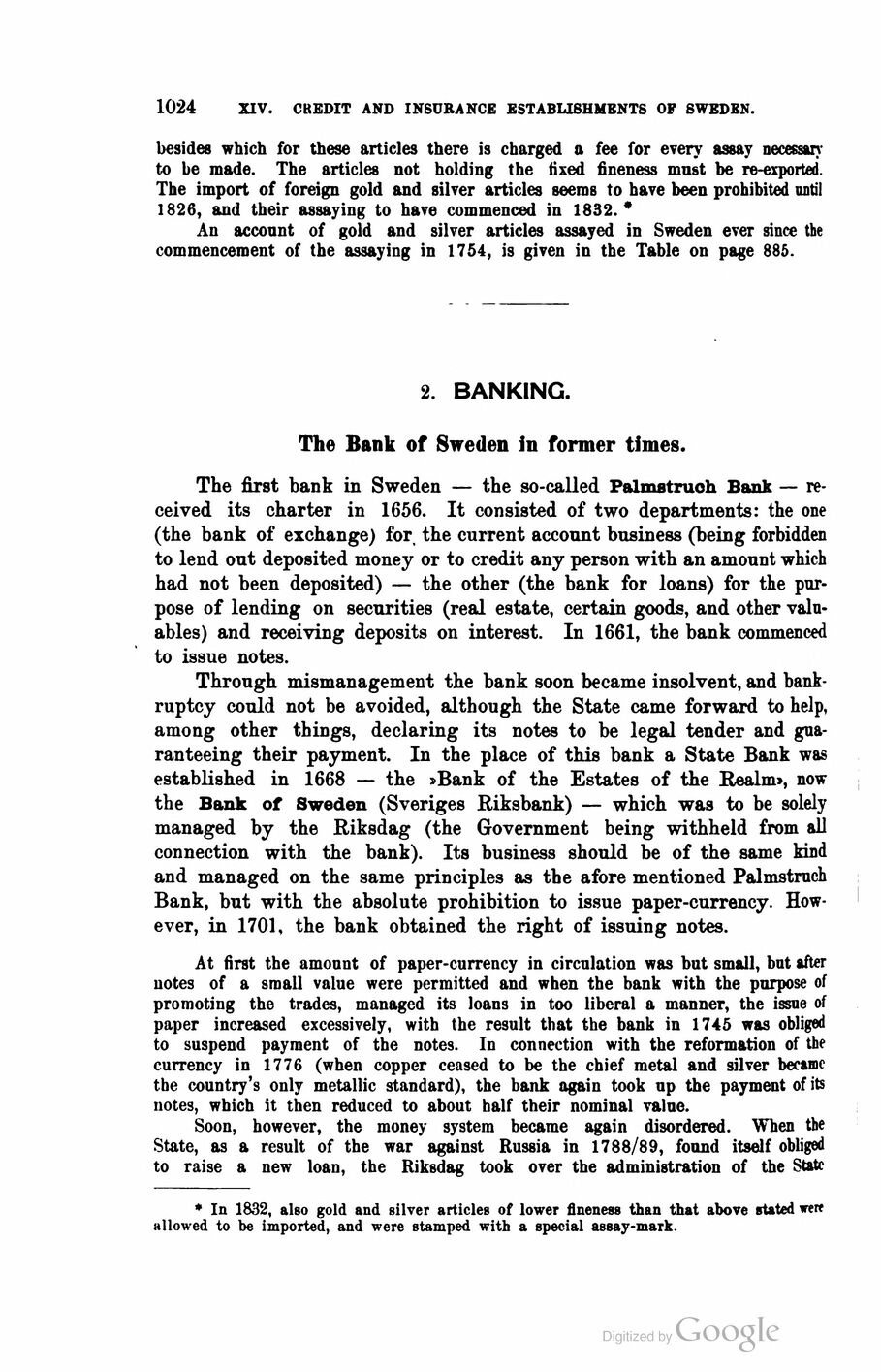
Full resolution (JPEG) - On this page / på denna sida - Second part - XIV. Credit and Insurance Establishments - 1. The Royal Mint - The Assay Office, by K. A. Wallroth, Comptroller at the Assay Office, Stockholm - 2. Banking - The Bank of Sweden in former times

<< prev. page << föreg. sida << >> nästa sida >> next page >>
Below is the raw OCR text
from the above scanned image.
Do you see an error? Proofread the page now!
Här nedan syns maskintolkade texten från faksimilbilden ovan.
Ser du något fel? Korrekturläs sidan nu!
This page has never been proofread. / Denna sida har aldrig korrekturlästs.
1024
XIV. CREDIT AND INSURANCE ESTABLISHMENTS OF SWEDEN.
besides which for these articles there is charged a fee for every assay necessan
to be made. The articles not holding the fixed fineness must be re-exported.
The import of foreign gold and silver articles seems to have been prohibited until
1826, and their assaying to have commenced in 1832.*
An account of gold and silver articles assayed in Sweden ever since the
commencement of the assaying in 1754, is given in the Table on page 885.
2. BANKING.
The Bank of Sweden In former times.
The first bank in Sweden — the so-called Palmstruoh Bank —
received its charter in 1656. It consisted of two departments: the one
(the bank of exchange) for. the current account business (being forbidden
to lend out deposited money or to credit any person with an amount which
had not been deposited) — the other (the bank for loans) for the
purpose of lending on securities (real estate, certain goods, and other
valuables) and receiving deposits on interest. In 1661, the bank commenced
to issue notes.
Through mismanagement the bank soon became insolvent, and
bankruptcy could not be avoided, although the State came forward to help,
among other things, declaring its notes to be legal tender and
guaranteeing their payment. In the place of this bank a State Bank was
established in 1668 — the »Bank of the Estates of the Realm», now
the Bank of Sweden (Sveriges Riksbank) — which was to be solely
managed by the Riksdag (the Government being withheld from all
connection with the bank). Its business should be of the same kind
and managed on the same principles as the afore mentioned Palmstruch
Bank, but with the absolute prohibition to issue paper-currency.
However, in 1701, the bank obtained the right of issuing notes.
At first the amount of paper-currency in circulation was but small, but after
notes of a small value were permitted and when the bank with the purpose of
promoting the trades, managed its loans in too liberal a manner, the issue of
paper increased excessively, with the result that the bank in 1745 was obliged
to suspend payment of the notes. In connection with the reformation of the
currency in 1776 (when copper ceased to be the chief metal and silver became
tbe country’s only metallic standard), the bank again took up the payment of its
notes, which it then reduced to about half their nominal value.
Soon, however, the money system became again disordered. When the
State, as a result of the war against Russia in 1788/89, found itself obliged
to raise a new loan, the Riksdag took over the administration of the State
* In 1832, alBo gold and silver articles of lower fineness than that above stated were
allowed to be imported, and were stamped with a special assay-mark.
<< prev. page << föreg. sida << >> nästa sida >> next page >>